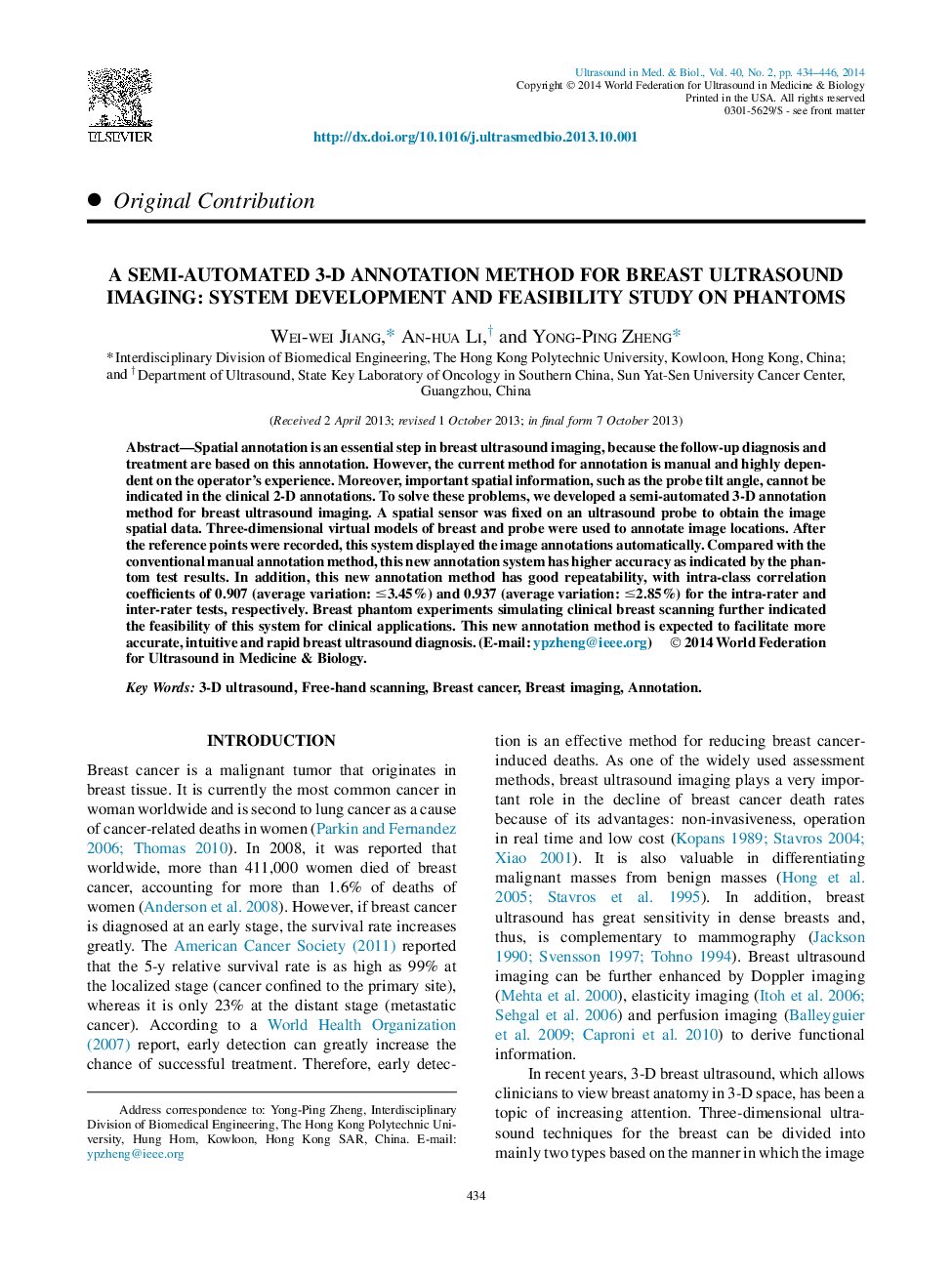| Article ID | Journal | Published Year | Pages | File Type |
|---|---|---|---|---|
| 1760555 | Ultrasound in Medicine & Biology | 2014 | 13 Pages |
Abstract
Spatial annotation is an essential step in breast ultrasound imaging, because the follow-up diagnosis and treatment are based on this annotation. However, the current method for annotation is manual and highly dependent on the operator's experience. Moreover, important spatial information, such as the probe tilt angle, cannot be indicated in the clinical 2-D annotations. To solve these problems, we developed a semi-automated 3-D annotation method for breast ultrasound imaging. A spatial sensor was fixed on an ultrasound probe to obtain the image spatial data. Three-dimensional virtual models of breast and probe were used to annotate image locations. After the reference points were recorded, this system displayed the image annotations automatically. Compared with the conventional manual annotation method, this new annotation system has higher accuracy as indicated by the phantom test results. In addition, this new annotation method has good repeatability, with intra-class correlation coefficients of 0.907 (average variation: â¤3.45%) and 0.937 (average variation: â¤2.85%) for the intra-rater and inter-rater tests, respectively. Breast phantom experiments simulating clinical breast scanning further indicated the feasibility of this system for clinical applications. This new annotation method is expected to facilitate more accurate, intuitive and rapid breast ultrasound diagnosis.
Related Topics
Physical Sciences and Engineering
Physics and Astronomy
Acoustics and Ultrasonics
Authors
Wei-wei Jiang, An-hua Li, Yong-Ping Zheng,
